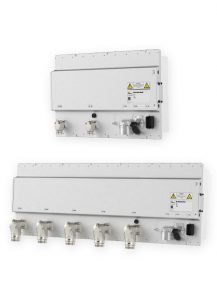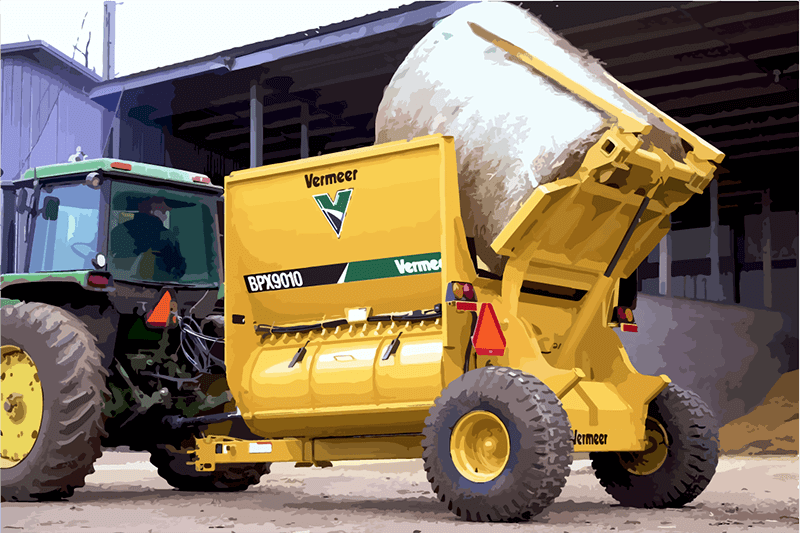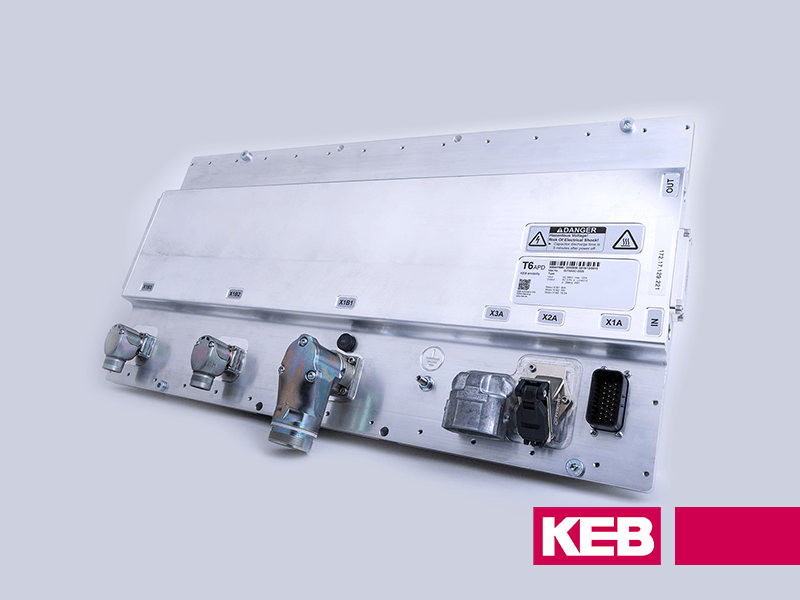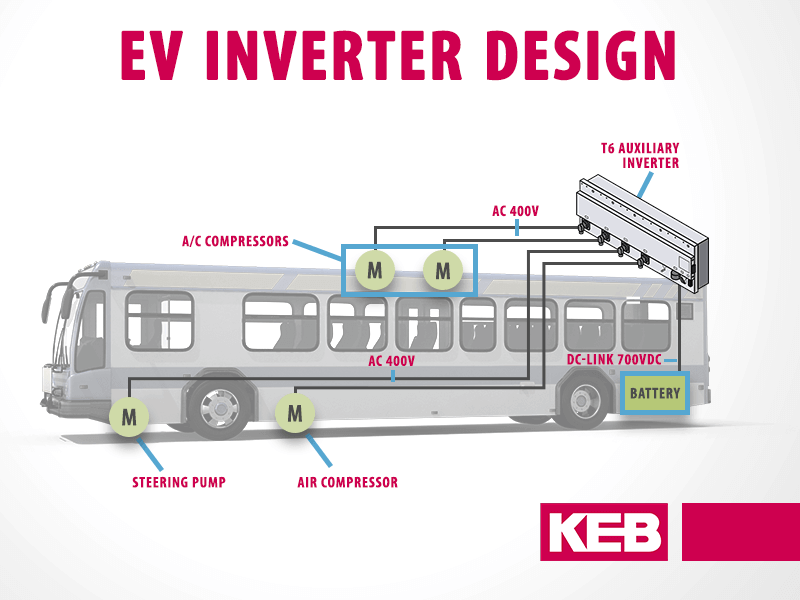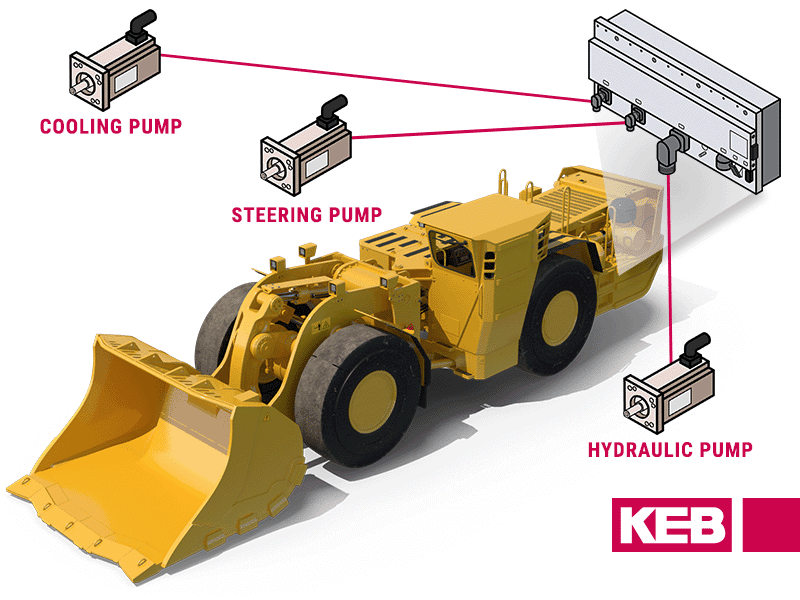The Electrification of Agricultural Equipment – Tractor Auxiliaries
This is Part I of a two-part series exploring the electrification of agricultural equipment. Part II will focus on the electrification of implements.
Vehicle electrification has begun migrating from urban streets and highways to off-highway construction and underground mining equipment but has only seen a handful of prototypes for agricultural applications. Many of the primary pain points of combustion-driven vehicles are the same, whether on the road or in the field – emissions and noise are the usual suspects as well as the desire for a path towards sustainability. While cost and capability limitations may yet be barriers to entry for the electrification of tractor auxiliaries, the technology and experience that is rapidly developing in consumer automotive and commercial vehicle applications will soon translate to a competitive total cost of ownership with benefits that far exceed today’s equipment.
Bountiful opportunities
Even more exciting than the pain points electrification resolves are the opportunities it provides. Increased fuel efficiency, reduced maintenance, and increased equipment lifetime are general electrification benefits which most recognizably affect the bottom line. Benefits more specific to agricultural applications include reduced waste and increased yield from precision farming, increased productivity and throughput, and even operator comfort. These benefits apply to a wide range of vehicles, from seeders to fertilizer spreaders and sprayers to harvesters…and even everyday chore and utility tractors.
What can be electrified?
The heart of agricultural equipment is currently a large combustion engine generating power. Within the tractor itself, this provides propulsion power to the wheels via the transmission and powers auxiliaries coupled via a belt drive. Apart from the tractor, the engine can also supply power to external implements via mechanical power take off (PTO) from the transmission or via hydraulics driven by a hydraulic pump. Since all or some of these components can be electrified, there will be a spectrum of topologies based on the application requirements ranging from mild-hybrid to full electrification solutions.
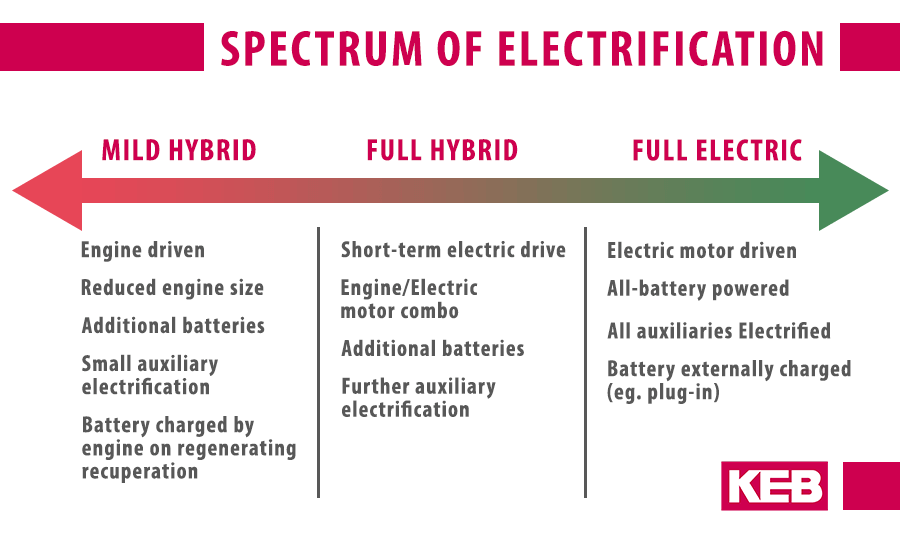
Hybrid topologies retain the combustion engine and uses electrical components in parallel to reduce the workload which allows a smaller engine or more efficient operation. Hybrids provide a solution when fully electric options may not be capable due to range limitations or the size and weight of battery packs needed to electrify everything. Since the propulsion system demands the most power it is likely that the electric agricultural equipment will start with the electrification of tractor auxiliaries and implements. For that reason, this article will focus on the benefits of electrifying auxiliaries and the second article in this series will focus on electrifying implements.
The Benefits of Electrifying Auxiliaries
A typical tractor contains several auxiliaries, including hydraulic and coolant pumps, air brake and A/C compressors, and a radiator fan. Traditionally, these have been coupled to the engine and their performance dependent on the engine’s speed. With fully electric tractors, there is no constantly-running engine to power the auxiliaries, so electrifying them is a matter of necessity for power on-demand.
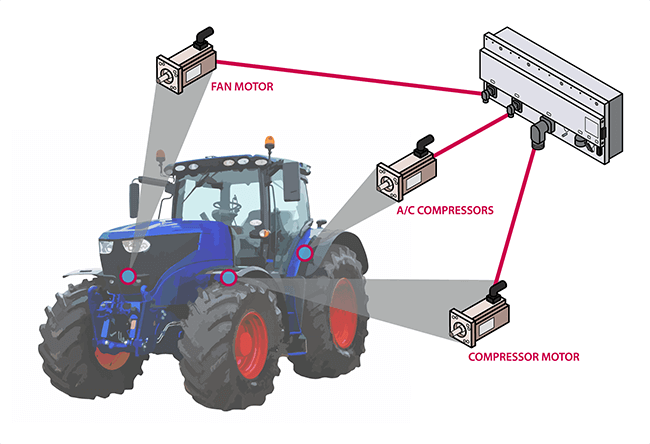
…electrifying the auxiliaries can reduce the size of the needed engine and decoupling them allows the engine to run at a more fuel efficient operating point…
In hybrid solutions which retain the combustion engine, auxiliaries coupled to the engine are parasitic loads requiring the engine to work harder or run at a less-than-optimal operating point. The result is not only increased fuel consumption, but also sub-optimal performance of the auxiliaries dependent on the engine RPM. Instead, electrifying the auxiliaries can reduce the size of the needed engine and decoupling them allows the engine to run at a more fuel efficient operating point while also allowing the auxiliaries to run at their independent operating points, all with power on-demand.
In addition to the general benefits of electrifying auxiliaries, each may have its own individual benefit.
Air Brake Compressor
Since the build-up of air pressure is dependent on speed of the compressor, one benefit of decoupling the air brake compressor from the engine is the ability to fill the compressor tank faster, especially compared to a low, idle speed which would also be an engine operating point where a coupled compressor would become a significant load.
A/C Compressor
Similar to the air compressor, de-coupling the A/C compressor from the engine allows full speed and full load operation to quickly cool down the cab, even with the engine off. This could also allow for a cabin pre-cool (or pre-heat, in the case of an electric heater) feature for the operator.
Engine Radiator Fan
When coupled to the engine, the radiator fan is a large parasitic load and provides its poorest cooling performance during idle. On the other hand, electrifying the radiator fan would not only increase fuel economy, but also enhance cooling performance and possibly run at higher speeds. Electrifying the fan also introduces the new feature of being able to run the fan in reverse to clean out the grill.
Hydraulic Pump
If large equipment or implements are being powered hydraulically, then an engine-driven hydraulic pump may be more suitable option (depending on the application) from an overall power standpoint. Nonetheless, electrification of implements is still a possibility and has its benefits which will be discuss further later. Additionally, electrifying hydraulic systems altogether provides the opportunity for “hydraulic replacement.” That is, eliminating the toxic hazards of hydraulic oil from leaks or spills. This may be particularly applicable to plant maintenance applications such as fertilization and spraying.
For dedicated systems like power steering pumps, electric solutions are capable of very quiet operation and provide very dynamic pressure response to high pressure steering forces during low speed maneuvering.
External Power
Another new functional possibility is the ability to add power outlets for power hand tools that operate on high voltage AC power. With high voltage DC bus available from the batters, an inverter can be used to regulate the output to various AC voltages (e.g. 120/230/400/480 VAC), frequencies (50/60 Hz), and phase options (1/3-phase).
KEB T6 Auxiliary Inverter Benefits for Agricultural Equipment
Given the large number of auxiliaries and implements that can potentially be electrified and the wide variety of agricultural equipment and applications, the T6 Auxiliary Inverter is a highly flexible solution. The “all-in-one” motor control system can be scaled from 1 – 6 independent motor controllers with modular power options of 7.5 kW, 15 kW, or 30 kW for each output. All types of AC motors are supported, including induction, permanent magnet, and switched reluctance motors and can be controlled without an encoder using sensorless closed loop motor control algorithms for dynamic performance and optimal efficiency. CAN J1939 or ISOBUS communications can be supported for easy integration with the vehicle control networks. Not only is the KEB electric vehicle inverter a highly flexible system, compared to individual inverters that control each motor, the consolidated design also reduces the size and weight and the number of cabling and coolant connections.
The T6 is specifically designed for commercial and off-highway vehicle applications and is made with automotive-qualified components to meet automotive EMC and environmental temperature, shock and vibration standards to withstand the rigor of commercial off-highway vehicles and equipment. The system utilizes an IP67 / IP6k9k housing with liquid cooling and integrated DC choke filters for reliability in all types of systems and environments.
As the world transitions from combustion engine technology to electrics solutions, agricultural equipment will surely follow suit and can benefit in many ways. The KEB T6 Auxiliary Inverter stands ready to help enable the benefits by electrifying both auxiliaries and implements while also providing motor control and automation solutions which can lead to new possibilities in farming and precision agriculture practices.
Click here to read Part II of this article focusing on the benefits of electrifying implements.
Tony Heiser is the Business Development Manager at KEB America, Inc. for the T6 Auxiliary Inverter for commercial electric vehicle applications. He received his Bachelor of Electrical Engineering from the University of Minnesota, Minneapolis-St. Paul and has 13+ years of experience with AC motor controls and VFD applications with KEB.
Let's Work Together
Connect with us today to learn more about our industrial automation solutions—and how to commission them for your application.
